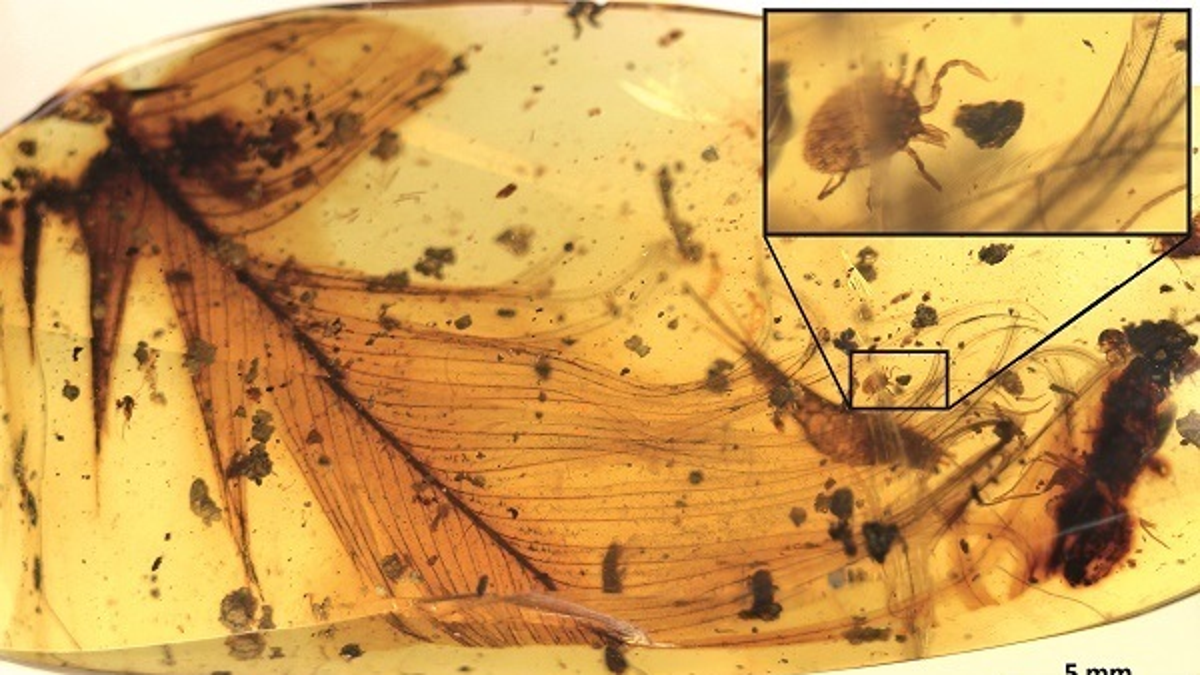
A tick discovered in amber likely feasted on feathered dinosaurs, research suggested. (Enrique Peñalver /Nature Communications )
A tick discovered encased in amber likely feasted on the blood of feathered dinosaurs as many as 99 million years ago, a new report says.
A study, published in Nature Communications on Tuesday, helped scientists determine what ticks feasted on before mammals evolved. Ticks, which were already known to be ancient critters, are commonly associated with biting mammals and humans.
The scientists based their studies on amber specimens discovered in Burma. In one of the pieces, a tick was located next to a feather that belonged to a dinosaur from the Cretaceous Period, NPR reported. The Cretaceous Period began about 145 million years ago and ended 66 million years ago, according to the Enclyclopedia Brittanica.
THIS 5,000-POUND BEHEMOTH IS THE WORLD’S HEAVIEST BONY FISH
“This study provides the most compelling evidence to date for ticks feeding on feathered animals in the Cretaceous,” Ryan C. McKellar, a paleontologist who was not part of the study, told The New York Times.
"Amber is fossilized resin, so it's able to capture small bits of the ecosystem almost instantly,” Ricardo Perez-de la Fuente, the author of the study wrote. "Amber can actually preserve interactions between organisms. This is the case with the feather and the grasping tick."
The discovery helped Perez-de la Fuente further his investigation into the link between ticks and dinosaurs.
"We had this indirect evidence about the relationship between ticks and feathered dinosaurs," Perez-de la Fuente said, adding that there was not sufficient evidence until the amber specimens.
David Grimaldi, an entomologist and one of the authors of the study, said the tick was a regular nymph, close in size to a deer tick nymph.
ASTRONAUTS’ FAITH: TINY APOLLO 13 BIBLE UP FOR AUCTION
Perez-de la Fuente said more research needs to be conducted on ticks and what they feasted on.
In another specimen, another tick was discovered but was encased in blood. Scientists were unable to study the blood because the tiny creature was not fully covered in amber.
Perez-de la Fuente said the amber specimens were bought online and one of the pieces was donated to the American Museum of Natural History in New York.
"We actually broke the wall between private collectors and scientists which is very uncommon, especially in paleontology," Perez-de la Fuente said. "That by itself is a success."
